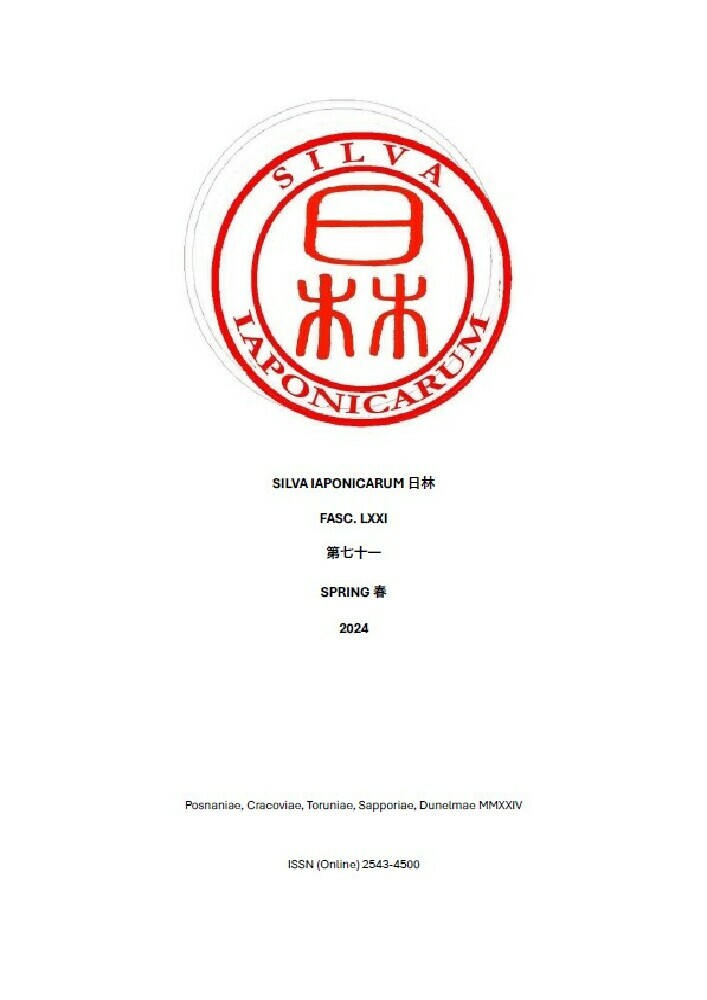Abstract
The aim of this paper is to demonstrate how the description of Japanese grammar is explained in current resources and to present another, more systemic, morphological approach. It will be achieved by examining explanations of the basic level grammatical unit -(i)mash-ō which can be roughly translated as ‘let’s’. At the beginning the crucial characteristics of present description are portrayed. After showing the basics of the traditional, syllabary description, examples of -(i)mash-ō explanations derived from textbooks are given. Then the author analyzes -(i)mash-ō in accordance with its morphological properties. This approach argues that it is in fact a compound built of smaller units each bearing a separate meaning. Afterwards they can be divided and located in different grammatical dimensions. The morphological segmentation of grammatical units can be used in many other occurrences. This would make paradigmatical descriptions of inflection related phenomena more possible.
References
Bańko, Mirosław 2012. Wykłady z polskiej fleksji [lectures on Polish inflection]. Warszawa: Wydawnictwo Naukowe PWN.
Bloch, Bernard 1970. “Studies in colloquial Japanese inflection”. Journal of the American Oriental Society 66 (2): 97–109. DOI: https://doi.org/10.2307/596327
Chamberlain, Basil Hall 1886. A simplified grammar of the Japanese language (modern written style). London: Trübner.
Hansen, Annette 2015. “Gengogaku-no chishiki-o nihongo-no jugyō-ni yakudateru / Applying linguistic knowledge in Japanese classes”. Japanisch als Fremdsprache 4, p. 54–61.「言語学の知識を日本語の授業に役立てる」.
Huszcza, Romuald, Maho Ikushima, Jan Majewski 2003. Gramatyka japońska [a grammar of Japanese], vol.1. Warsaw: Wydawnictwo Akademickie DIALOG.
Jabłoński, Arkadiusz 2021a. Polski leksykon japońskich terminów gramatycznych [Polish lexicon of Japanese grammar terms], vols. 1–3. Toruń: Wydawnictwo Naukowe Uniwersytetu Mikołaja Kopernika. DOI: https://doi.org/10.7592/Tertium2018.3.2.Jablonski
Jabłoński, Arkadiusz 2021b. Japanese nominal elements as abandoned parts of speech. Dąbrówka: Wydawnictwo Rys.
JLCIS 2011 = see Tokyo University of Foreign Studies, Japanese Language Center for International Students (JLCIS) 2011.
Kopp, Gabriele, Josef Alberti, Siegfried Büttner 2013. Planet 3, Kursbuch: Edycja Polska. Warsaw: Hueber Verlag.
Matsuda Kozue (ed.) 2021. Zemmon hintotsuki-de, nigate demo tokeru. Chūgaku kokugo bumpō [with hints for every question, you can solve it even if you're not good at it. Junior high school Japanese – grammar]. Tokyo: Gakken Purasu. 松田こずえ編.『全問ヒントつきで ニガテでも解ける 中学国語文法』.東京都:学研プラス.
Piotrowska-Skrzypek, Małgorzata, Mieczysław Gajos, Marlena Deckert, Dorota Biele 2019. C’est parti: Méthode de français. Cracow: Draco.
Polański, Kazimierz (ed.) 1999. Encyklopedia językoznawstwa ogólnego [encyclopedia of general linguistics]. Wrocław, Warsaw, Cracow: Zakład Narodowy im. Ossolińskich.
Samson, Colette 2006. Amis et compagnie 1: Méthode de français. Paris: CLE International.
Shibatani, Masayoshi 1990. The languages of Japan. Cambridge: Cambridge University Press.
Suriiē Nettowāku (ed.) 2012. Minna-no nihongo shokyū I, dainihan [Japanese for everyone 1. 2nd edition]. Tokyo: 3A Network. スリーエーネットワーク編. 『みんなの⽇本語初級 初級I 第2版』. 東京都:スリーエーネットワーク.
Suriiē Nettowāku (ed.) 2019. Minna-no nihongo shokyū I, dainihan. Hon’yaku/bumpōkaisetu eigohan [Japanese for everyone 1. 2nd edition. Translation & grammar notes, English edition]. Tokyo: 3A Network. スリーエーネットワーク編.『みんなの⽇本語初級I 第2版 翻訳・文法解説 英語版』. 東京都:スリーエーネットワーク.
Tokyo University of Foreign Studies, Japanese Language Center for International Students (JLCIS) 2011. Shokyū nihongo jō [basic Japanese. Vol. 1]. Tokyo: Bonjinsha. 東京外国語大学・留学生日本語教育センター. 『初級日本語 上』. 東京都:凡人者.
Tomomatsu Etsuko, Miyamoto Jun, Wakuri Masako 2010. Donna toki dō tsukau. Nihongo hyōgen bunkei jiten [when and how to use them? A dictionary of Japanese expression and sentence patterns]. Tokyo: ALC PRESS INC. 友松悦子、宮本淳、和栗雅子 2010.『どんな時どう使う 日本語表現文型辞典』.東京都:アルク.
Viúdez, Francisca Castro, Pilar Díaz Ballesteros, Ignacio Rodero Díez, Carmen Sardinero Franco 2006. Español en marcha. Nivel básico [Spanish on the go. Basic level]. Madrid: SGEL.
Wiseman, Greg, Richard Wiseman 2018. Repetytorium maturzysty: Język angielski [revision materials for high school graduates: English]. Kraków: Wydawnictwo Greg.
License
Copyright (c) 2024 Przemysław Damian Rozwadowski

This work is licensed under a Creative Commons Attribution 4.0 International License.


